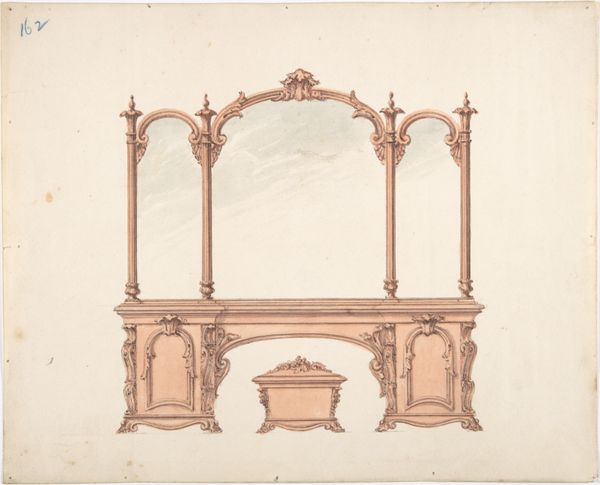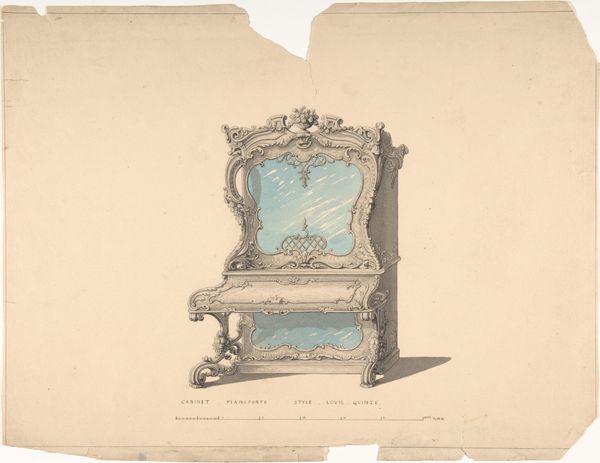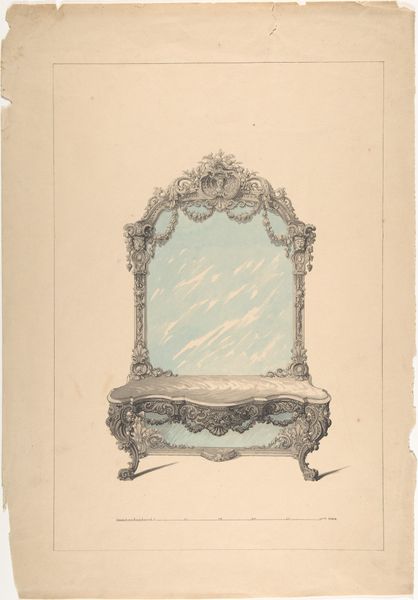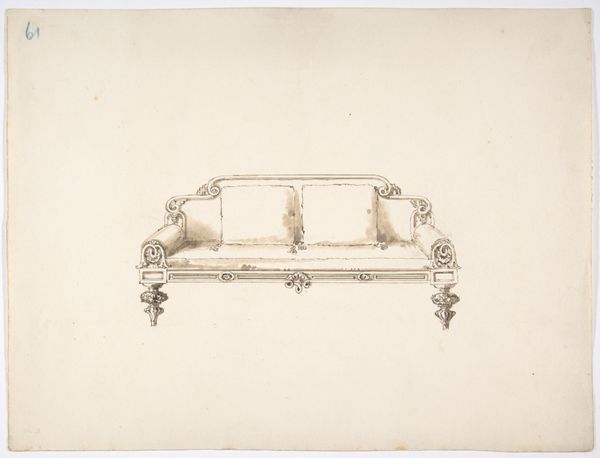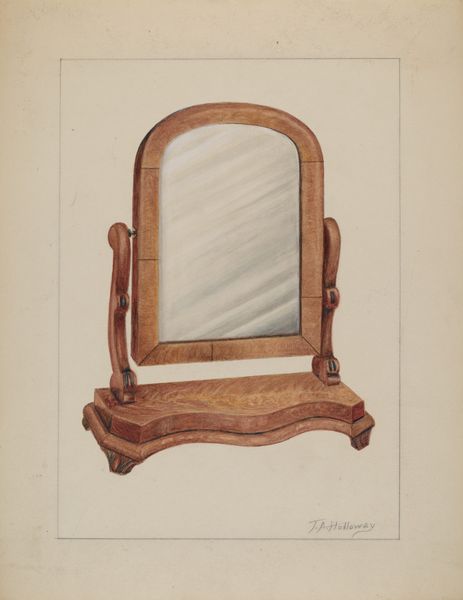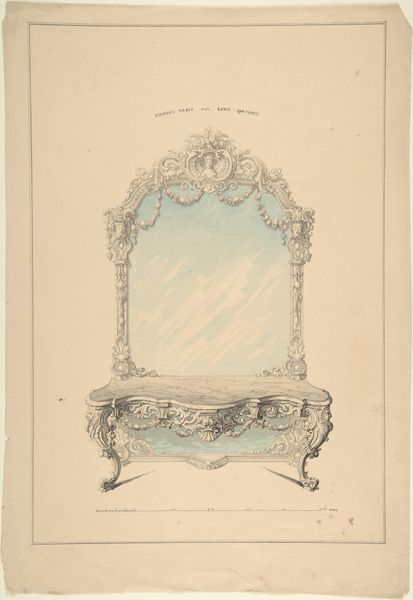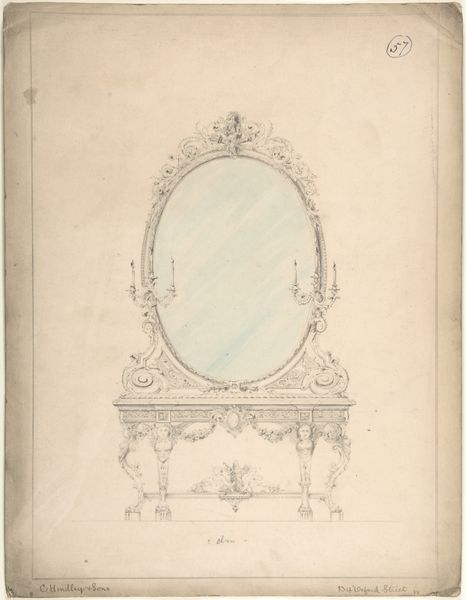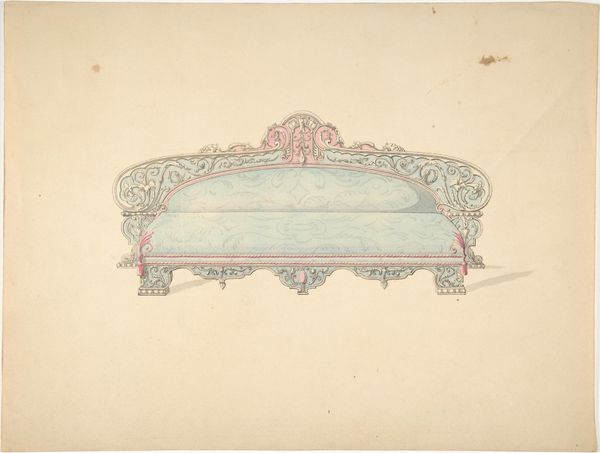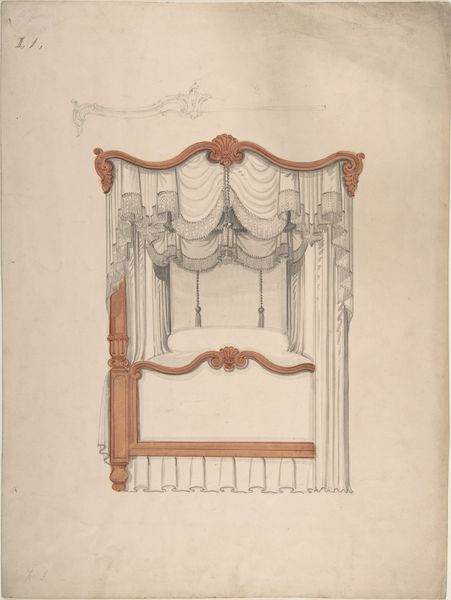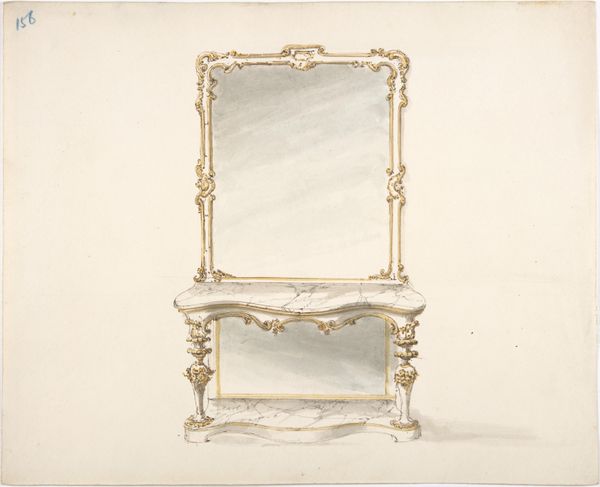
Design for Curvilinear Side Table with Mirror 1815 - 1840
0:00
0:00
drawing, print, watercolor
#
drawing
#
table
#
neoclacissism
# print
#
watercolor
#
decorative-art
#
watercolor
Dimensions: sheet: 9 7/16 x 11 15/16 in. (24 x 30.4 cm)
Copyright: Public Domain
Curator: The artwork before us is a “Design for Curvilinear Side Table with Mirror," dating back to the period of 1815 to 1840. It’s currently housed here at the Metropolitan Museum of Art. Editor: My immediate impression is that of rococo elegance, yet subdued by the very medium in which it's depicted. There’s a delicate, almost fleeting quality about the rendering. Curator: Indeed. As a design drawing executed in watercolor and print, its lines articulate Neoclassical principles in decorative-art form. Notice the balance in its curvilinear structure. It’s almost a dance in its composition, achieving structural harmony. Editor: I'm struck by the almost performative aspect. Consider the context: the rise of interior design as a reflection of bourgeois identity, projecting sophistication, class, and access to emerging modes of industrial production. The table as a stage for self-display. Curator: The choice of form, specifically the elaborate scrolls, lends itself well to discussions of aesthetics. Semiotically, we could delve into the significance of the table as a signifier of luxury. Its very function speaks of domestic rituals, framing self-perception within the looking glass. Editor: But that ritual is class-based, exclusionary. Not only were functional designs like this out of reach for ordinary folk, their reflection gazing back from within would exclude the vast majority whose faces couldn't feature in national or public life. How does its intended location reinforce the distribution of socio-political agency? Curator: Precisely! It invites analysis not merely on an aesthetic level but also on a socioeconomic one, thereby adding depth. Considering it in the context of other artworks from its period is fruitful, it certainly echoes some ideas, even some aesthetic qualities. Editor: Absolutely. Examining where it may have resided can change our whole analysis of its construction. I leave this encounter viewing not just a table, but also the politics of decor in 19th-century life. Curator: And for me, a reminder that within this visual language we perceive forms, relations, and hidden structures, it gives a sense of how much it still invites deconstruction and meaning-making for future interpretation.
Comments
No comments
Be the first to comment and join the conversation on the ultimate creative platform.



